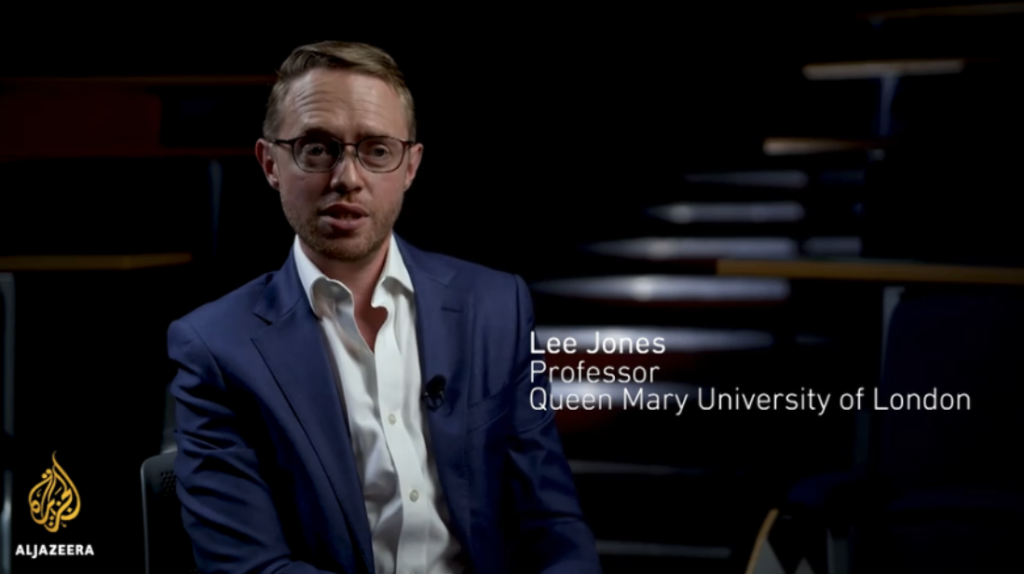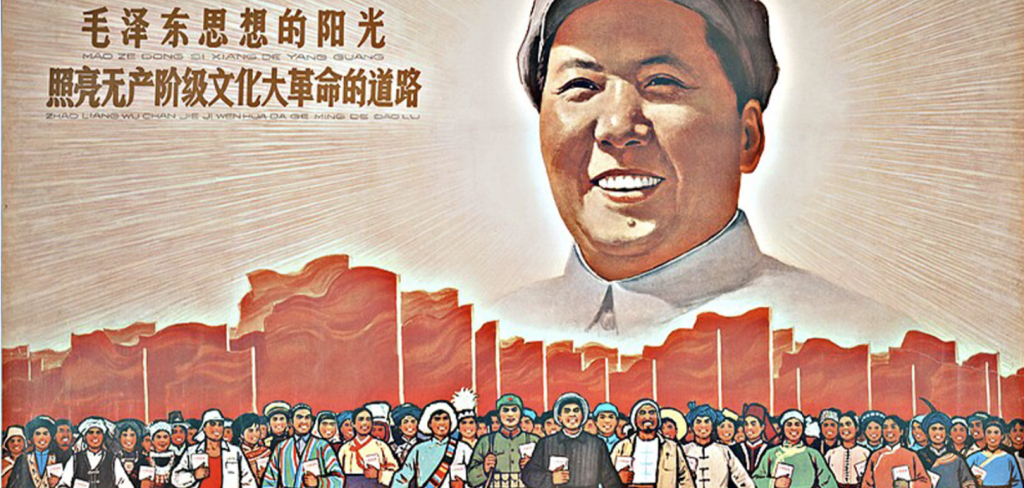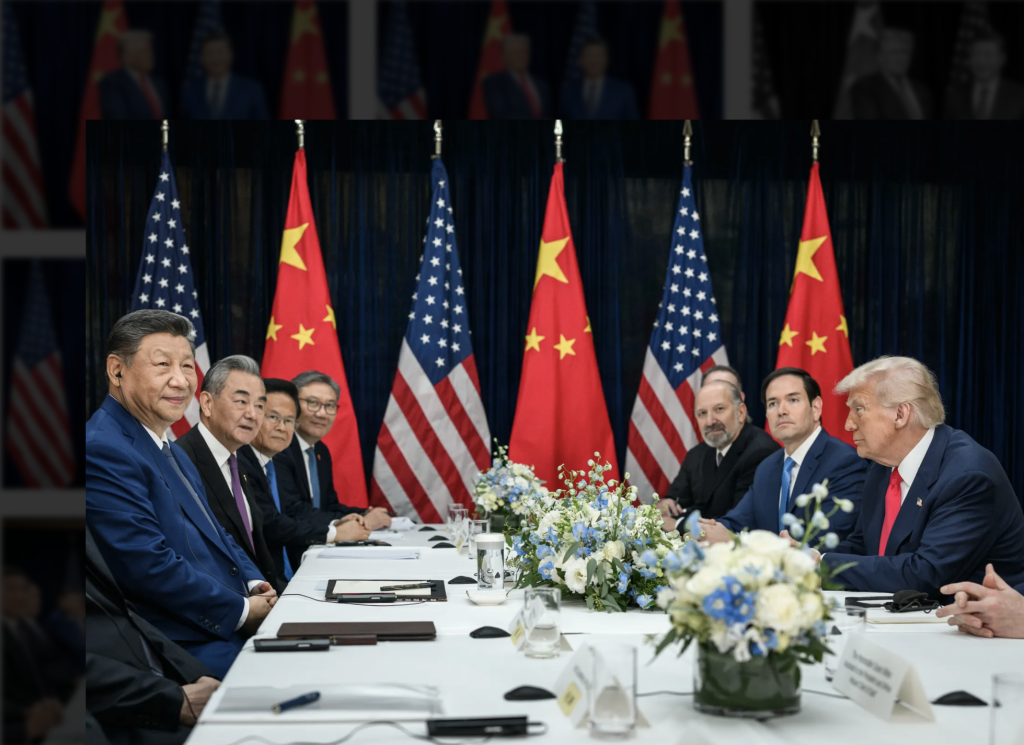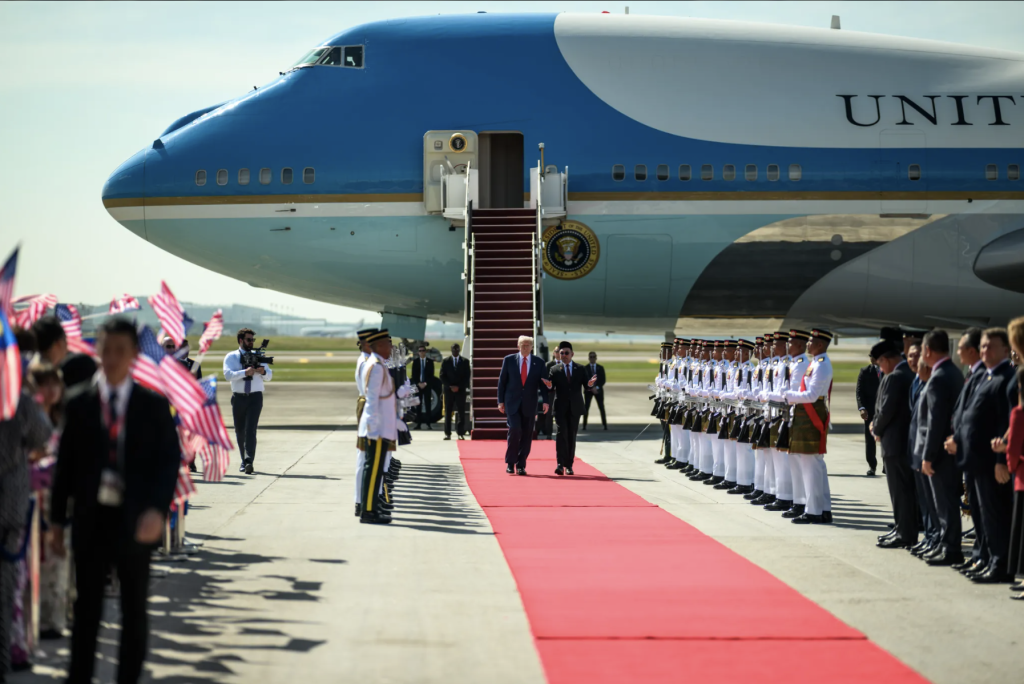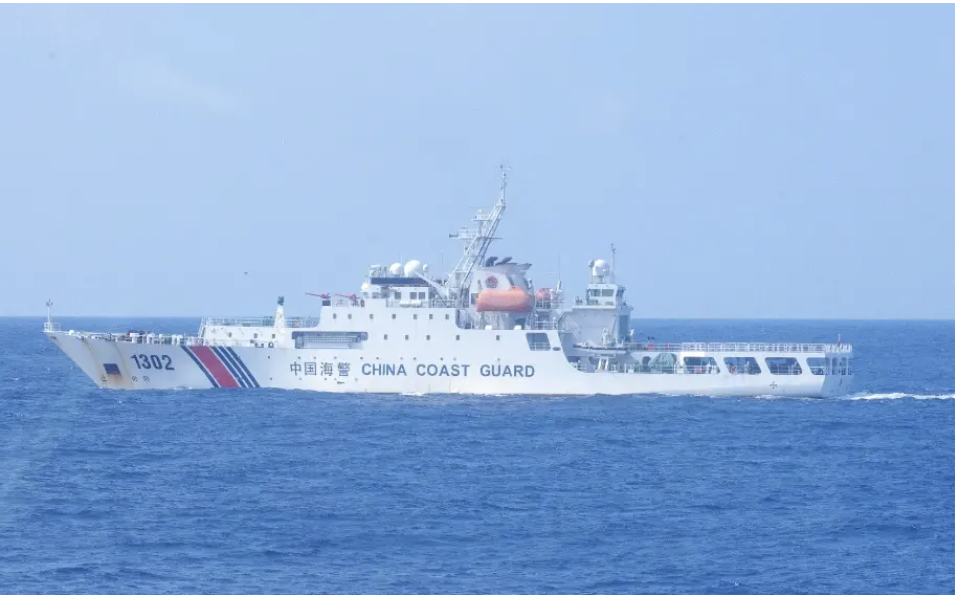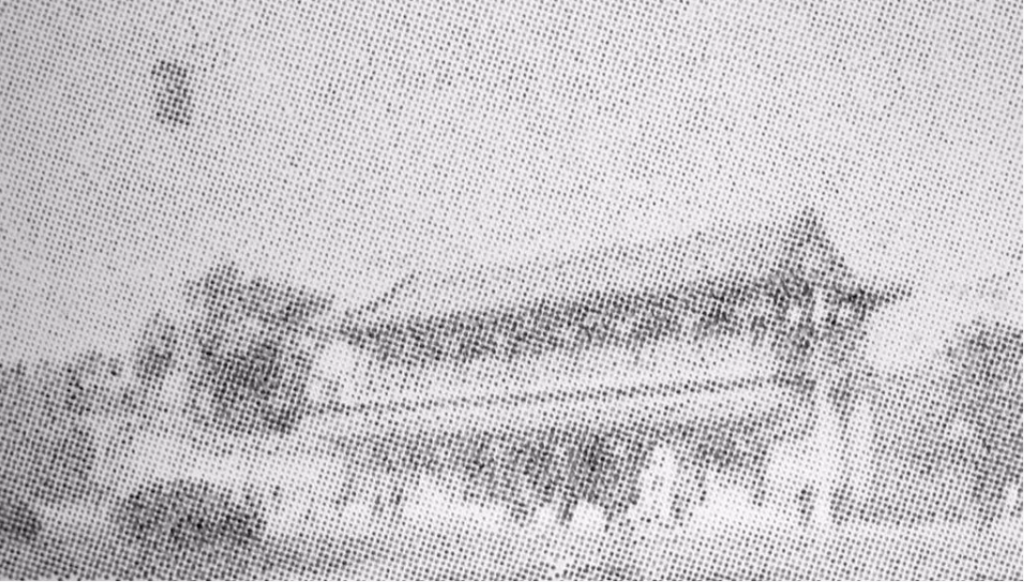Cross-Strait Relations: The Search for Serenity within Incongruity
- Analysis
 J. Tedford Tyler
J. Tedford Tyler- 04/21/2023
- 0
J. Tedford Tyler is a Foreign Policy Associate at the Charles Koch Foundation. He is an M.I.A. graduate of Texas A&M University and studied Chinese at the Nanjing University of Traditional Chinese Medicine.
China has two political narratives for accomplishing unification with Taiwan. A “by force” narrative argues that military power may be required, while a “by peace” narrative proposes a softer tone of unification. Both narratives exist and have supporting evidence from Taiwanese politics. The status quo, however, makes them “contestable,” meaning that one narrative has not necessarily triumphed over the other. “Contestability” provides the Chinese leadership with flexibility. Leadership can shape the narrative around unification in response to domestic and foreign policy realities. Currently, the status quo is eroding, and “contestability” is vanishing. This is partially due to U.S. policy towards cross-Strait relations.
Maintaining the status quo serves both U.S.-China relations and U.S.-Taiwan relations. It supports relations with Beijing by tacitly acknowledging that China has the possibility, albeit very unlikely, of peacefully unifying with Taiwan. Relations with Taipei are supported by continued economic and cultural exchange. Washington should not abandon Taiwan but also should not make a clear alliance commitment. If the status quo holds, peace is likely to persist in the Taiwan Strait, creating mutual benefit for all involved entities.
Ideas are Contestable
China’s different rhetorical approaches to Taiwan underscore the importance of ideas, which can be difficult to grasp, prone to stereotyping, and challenging to measure. Philosopher Charles Taylor observes that a key feature of post-modernism is the “contestability” of ideas. There is a proliferation of options and no one option gets the final word. This is important because humanity is imbibed in an ecosystem of ideas, which shape the narrative environment.
These ideas could be culturally inherited or directly experienced. For example, the United States inherited The Enlightenment, English Common Law, and Judeo-Christian Values, while experiencing events like the American Revolution and American Civil War. The PRC inherited Confucianism, Legalism, the Century of Humiliation, and the May Fourth Movement, while experiencing the Cultural Revolution and Reform and Opening-Up. These two lists should not be treated as exhaustive, but illustrative.
For China, “contestability” does not create public debate, but rather makes space for leaders to associate themselves with different ideas. When he began leading the CPP, Mao Zedong painted himself as pragmatically “seeking truth from facts.” That same phrase was later associated with Deng Xiaoping’s leadership. Under Deng, the CCP adopted market-orient reforms that flexibly contorted with socialism. It was announced as “Socialism with Chinese Characteristics,” a nod to both the CCP’s Marxist-Leninism and Chinese ingenuity to combine Chinese traditions with Western socialism.
The implication is that the ideological lines of reality are not necessarily set in stone. Possessors of power shift the Overton window as they see fit. Ideas can be strengthened or weakened through actions and statements. Regarding Taiwan, Chinese leadership can draw and redraw the lines of “success” in response to domestic and foreign policy realities.
“Contestability” allows for a peaceful narrative that preserves China’s sense of moral superiority. This narrative emphasizes a Chinese belief that hard power is unnecessary to achieve objectives. A peaceful narrative might seem naive, but it succeeds in giving Chinese leadership a wide berth to define “making progress on the Taiwan issue.” Associated primarily with Confucianism, it can be seen in Chinese exceptionalism. China is adamant to think of itself as the exception to great power competition, where the rise of great powers alters the balance of power in the international order. And to China’s credit, it can look to the time of the Tang Dynasty, where China adroitly wield soft power statecraft as the foundation of its grand strategy.
In more contemporary history, the peaceful narrative can be seen during the time of former PRC leader Hu Jintao. During his administration, cross-Strait economic engagement and cultural exchange dramatically increased. The whole premise of the Hu Era was the “peaceful rise.” There was a strong recoil at any suggestion of Chinese policy as being aggressive. While its power was expanding, the logic was for a latent military power for self-defense. Regarding Taiwan, the peaceful narrative had confidence that Taiwanese ‘compatriots’ would be wooed to unify with the PRC. The size of the combined cross-Strait economy, the prospect of full participation in the international community, the Ma Ying-jeou years, and a happy end to the civil war are all positive inducements that underpin the peaceful narrative.
Conversely, China’s force narrative is derived from a desire to escape weakness and remain strong. This focuses on China’s Century of Humiliation and the sense that foreign powers continue to interfere with Chinese domestic politics. The implication is that Taiwan becomes a matter that needs to be forcefully resolved. Liu Jieyi, the former director of the PRC’s Taiwan Affairs Office, captures this sentiment when he wrote in the People’s Daily, “the Taiwan issue arises due to the weakness of the nation and will inevitably end with the rejuvenation of the nation.”
While the Hu Administration is associated with improving ties between Beijing and Taipei, it also passed the 2004 Anti-Secession Law, which laid down the legal framework making Taiwan’s independence illegal under PRC law. It was largely driven by a sense that the political winds in Taiwan may be unfavorable in the long term. Tian Feilong, director of the Law Research Association for Cross-Strait Relations, wrote about how Taiwan’s youth population is increasingly being “poisoned” by the calls for independence. In the article, Tian writes about the need to “shift away from the original passive, coping, waiting, and traditional approaches and concepts that focus more on guidance by interest.”
Progress is Perceptible
“Progress”, towards unification, is ultimately what China makes of it. That’s the stated goal, and if Taiwan does not declare independence, “progress” becomes very murky and fuzzy. Perceptibility allows for progress to be constructed and deconstructed.
Liu Jieyi recently wrote in Qiushi, the CCP’s leading theoretical journal, about the need to “put [this strategy] into practice,” Liu proceeds to outline a strategy centered upon optionality, whereby China keeps all options open and maintains room to strategically maneuver. In terms of coercion, he suggests suppressing the voices of Taiwanese independence. This is balanced by a call to continue promoting cultural and educational exchange between the Mainland and Taiwan. His point about positive policies towards Taiwan highlights the need to build trust. Liu urges that China should continue refusing to renounce the use of force to achieve unification. While Liu’s article appears muddled, “contestability” helps explain the logic.
At first glance, China’s peaceful narrative could appear naive, but as recently as 2016, China enjoyed a warmer relationship with Taiwan. In 2008, the KMT ousted the Democratic Progressive Party (DPP) and ushered in the Ma Ying-jeou years. From 2008-2016 cross-Strait relations trended upwards. The culmination was a historic meeting in Singapore, between Ma and Xi. Their November 2015 meeting marked the first gathering of incumbent Chinese and Taiwanese presidents in sixty-six years. They both reiterated their support of the “1992 Consensus,” which involves mutual agreement on the existence of “one China.” Xi briefly praised the Ma for improving cross-Strait relations, while Ma outlined new cooperation avenues: lowering tensions, trade agreements, establishing consular facilities, crisis-management hotlines, and jointly “revitalize China (civilization and culture).”
Throughout his tenure, Ma stated that “eventual unification” was his policy preference. But he tempered this sentiment by promising no changes in the status quo during his administration. “We are all Chinese”, said Ma in a March 2023 visit to the mainland. His relevance in Taiwanese politics could certainly be overstated, but Ma is an example of what is possible.
While Tsai Ing-wen’s DPP administration has taken a stronger line towards resisting China, the DPP has also presented a more conciliatory tone. At the beginning of 2023, the DPP announced a shift from 抗中保台 (“resist China, protect Taiwan”) to 平和保台 (“peace protects Taiwan”). This should not be seen as waving the white flag, but as pragmatically acknowledging China’s power and the best way to maintain peace. “The changing ruling party in Taiwan” is seen as a variable that either raises or lowers the emotional temperature.
China needs to maintain hope for unification, even if it may seem far away. This hope is kept alive as the political winds shift in Taiwan’s domestic politics. At times, the KMT can put forth its agenda, which generally favors cooperation with Beijing. When these domestic winds shift, Chinese leadership can trumpet them as “progress.” Evidence for this can be seen in March 2008, when the PRC Taiwan Affairs Office subtly praised the win of the KMT over the DPP.
The United States is also seen as playing an important role in cross-Strait politics. According to Xiamen University scholar, Chen Xiancai, after Ma’s administration departed, the United States was viewed as usefully restraining Taiwan’s independence-minded voices. But as the larger U.S.-China relationship frays, “contestability” erodes. As American politics is incentivizing more hawkish policy towards Taiwan, China adopts “strategic clarity” towards Taiwan. The result is an action and retaliation cycle, where the United States is more open about support and China responds with a forceful narrative about Taiwan. Liu Zhaojia, member of the Chinese People’s Political Consultative Conference, raises this point when he notes that the loss of “strategic ambiguity” by Washington is leading Beijing to pursue less “passive” options.
The Biden Administration is trying to both support Taiwan and avoid larger, strategic conflict with China. It ends up amounting to what scholars call a “tactical re-ambiguation”, in which U.S. policy pays lip service to the status quo but signals actions that trouble China. One area where the assistance is most troubling concerns Taiwan’s foreign arms sales procurement. Chinese Academy of Social Sciences researcher, Wang Shushen, highlights the gradual relaxation on the sales of offense-oriented capabilities, such as F-16 fighter jets, High Mobility Artillery Rocket System (HIMARS) multiple rocket launchers, and Standoff Land Attack Missile-Expanded Response (SLAM-ER) aircraft cruise missiles. These capabilities would allow the Taiwanese military to potentially hold the Chinese Mainland at risk.
What Is to Be Done?
In The Irony of American History, the American public intellectual Reinhold Niebuhr wrote, “The final wisdom of life requires, not the annulment of incongruity, but the achievement of serenity within and above it.” Niebuhr’s statement captures the challenge facing both Taiwan and China. How to find serenity amid an unresolved civil war, that is fast approaching its 100th birthday? The current arrangement is far from perfect, but it has allowed China to continue pursuing its desire for unification and has given Taiwan de facto independence.
In the coming years, China’s military power will continue to grow, and East Asia’s balance of power will subsequently favor China over the United States. But while the problem has a military dimension, that is only one piece of the larger strategic problem. The United States does have an interest in acting as Taiwan’s “armourer, but not gurantor.” This does mean thoughtfully selling Taipei anti-ship missiles, drones, mines, and other anti-access/area denial (A2/AD) capabilities. These capabilities position Taiwan to more effectively repel China, rather than the expensive, prestige combat systems Taiwan has purchased. But the best thing for the United States is to focus on getting the politics right.
First, this means no public visits by U.S. officials. Washington’s relationship with Taiwan should be conducted by the American Institute in Taiwan, retired U.S. government practitioners and academic scholars, not through active Congress members. High-profile photo-ops between U.S. lawmakers and Taiwanese politicians does little to concretely advance cross-Strait relations. Beijing’s ire is raised without making Taiwan more secure. Selling Taiwan defensive weaponry will undoubtedly upset China, but that may be worthwhile if Taiwan is receiving A2/AD weapons and addressing the balance of power issues. Although U.S. House Speaker Kevin McCarthy met with Tsai Ing-wen, it occurred on American, not Taiwanese, soil.
Second, this means continuing strategic ambiguity, which has been weakened by President Biden’s pledge to defend Taiwan. Clinging to this policy allows U.S. policymakers to both respect China and check its ambition. Going through the ritual of honoring the status quo acknowledges China’s great power status. By giving China an element of polite deference, it minimizes the irritation that Taiwan occasionally causes for U.S.-China relations. At the same time, strategic ambiguity is supported by keeping the price of invasion high. It communicates that China does not have a free hand to invade Taiwan. China must prepare for the possibility of a U.S. military intervention, raising the political and military costs of an invasion. The current policy checks China’s ambition without being explicit and as importantly reassures Beijing, that change is not on the horizon.
Strategic ambiguity also serves U.S. policy towards Taiwan. Abandoning Taiwan in some sort of “grand bargain” would not serve U.S. interests. But at the same time, providing Taiwan with a public, air-tight security guarantee has risks. It could embolden supporters of de jure independence, leaving Taiwan’s military in a bind. They would be responsible for mounting a defense that has no assurances of success. The military balance no longer favors Taiwan, which to its credit, has lengthened the period of conscription and increased the defense budget. A successful defense would likely require U.S. military support.
Finally, this means considering Taiwanese politics, which is largely geared towards supporting continuity in the status quo. Taiwan’s 2021 Quadrennial Defense Review states that “the ROC is dedicated to maintain (sic) the peaceful status-quo across the Taiwan Strait.” While this same document raises concerns about Chinese gray zone tactics, the Taiwanese population is unlikely to favor unification with China. One recent study showed that ninety-five percent of the population favor the status quo. That study showed some differences in why the status quo was favored, (i.e., being a short-term solution, desirable but unfeasible, etc.), but the point is the population seems to have found serenity within the incongruity of arrangement.
Taiwanese public opinion suggests displeasure at some visits by senior U.S. officials. Scholars affiliated with the Brookings Institution recently surveyed Taiwanese respondents about their attitude towards then-U.S. House Speaker Nancy Pelosi’s August 2022 visit to Taiwan. Sixty-two percent of respondents said her visit “made Taiwan less secure,” while only thirty percent felt it “made Taiwan more secure.” For the general public, these visits seem to provide very little substance.
For U.S. policy to pursue stability and serenity vis-a-vis Taiwan means prudently continuing the status quo, which buys Taiwan more time. Washington should follow Taiwan’s lead and help reassure China that peace, not armed conflict, is still the preferred resolution for achieving its unification objectives. This narrative is theoretically a possible outcome, and the United States can play a part by supporting “contestability.”

